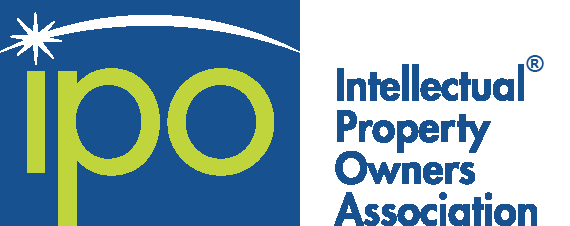Introduction and Background
This project, executed by the Corporate IP Management Committee (the “Committee”) of the Intellectual Property Owners Association’s (“IPO”), is meant to gather information regarding corporate practices for managing intellectual property (“IP”) across a variety of industries.
All corporate members of IPO were invited to be interviewed by members of the Committee to provide insights on how they manage their IP operations across eight topics:
- IP Management Organizational Structures
- Development of IP Strategy
- Patent Prosecution
- IP Management Software
- Metrics
- Licensing-Out
- Licensing-In
- IP-Related Education for Corporate Employees
Ultimately, representatives of 20 companies were interviewed during the summer and fall of 2015 using the following questions as a guide to explore the eight topics:
(Click on the link below each topic and related question(s) to read a topic summary and related detailed interview notes)
Organization
- Outside of the legal department, what other people/departments are involved in IP management activities (e.g., a dedicated IP management group, R&D, business unit management, etc.) including development of strategy, patent prosecution, licensing activities, and developing and tracking analytics/metrics?
Read the full Organization Summary
Strategy
- Why do you obtain IP assets? Freedom-to-operate, licensing, defensive purposes, etc.?
- How do you ensure IP strategy is aligned with business strategy? Who in the organization is involved in assisting with this effort
- How have the AIA, PTAB decisions, and recent Supreme Court decisions affected your IP management activities (for instance, related to the patenting decisions, patenting budgets, maintenance fee decisions, licensing, litigation, etc.)?
Read the full Strategy Summary
Patent Prosecution
- What criteria is used for evaluating invention disclosures for patenting?
- Who implements criteria and makes the decisions?
- How do you determine your new patent filing and maintenance fee budgets? Are they combined into one budget or considered separately?
- Have you undertaken an exercise to prune your portfolio to reduce maintenance fees? If so, describe the motivation and the process.
- To what extent, and how is, prior art identified?
- How are decisions made whether to conduct patent searches and clearance searches?
Read the full Patent Prosecution Summary
Software
- What software solutions do you employ related to IP and which business processes are tracked by these tools (invention disclosure, patent prosecution, docketing, maintenance fee payments, licensing, litigation, etc.)?
Read the full Software Summary
Metrics
- What are the primary metrics you use to measure IP management success?
Ready the full Metrics Summary
Licensing-Out
- Who makes decisions regarding whether to license or not (e.g., business unit leaders, product leaders, legal, etc.)?
- Do you have policies regarding which patents can be licensed (core and/or non-core)?
- Are licensing-out opportunities proactively or passively identified?
- If proactive, do you use a broker? What are the terms of such brokering relationships (e.g., contingent agreements, hourly, other)?
- How is pricing determined? Who approves pricing decisions?
Read the full Licensing-Out Summary
Licensing-In
- Who is responsible for identifying opportunities?
- Are licensing-in opportunities proactively or passively identified?
- How is pricing determined? Who approves pricing decisions?
- Is their coordination between licensing-in and R&D efforts (make v buy decisions)?
Read the full Licensing-In Summary
Education
- How are employees educated regarding IP issues relevant to their jobs?
- What IP topics are part of employees’ training?
Read the full Education Summary
The results of the Committee’s work, as presented here, provides a summary of the results of the interviews along with the detailed notes taken by Committee members, organized by topic. Although the Committee specifically sought to only gather information that was not considered confidential by the corporate participants, in an effort to further safeguard the information we obtained, all information has been provided by topic and without disclosing corporate participants’ names.
Importantly, the results of this project as of the date of the current date have not necessarily helped to identify “best” practices in IP management given that only 20 companies participated. The Committee believes that many more companies within each relevant industry must eventually be interviewed, and their practices documented, to develop practices that can be considered “best” practices in any given industry. As such, the results of the project as documented here are expected to be the first step in IPO’s and the Committee’s efforts to eventually identify corporate IP management best practices, by industry. Currently, IPO and the Committee intend to perform several additional rounds of interviews with other companies over the next few years to gather enough information to eventually be able to identify “best” practices within a given industry. Although IPO and the Committee believes that the information presented here is interesting and potentially helpful to IPO members, we believe that the identification of “best” practices as a result of more extensive interviewing will provide significant value to IPO member. If you have a desire to have your company participate in this ongoing project, please reach out to Scott Weingust at sweingust@srr.com.
Project Participants/Authors:
Gary Bender, Bruce Burton, Angela M. Coxe, Christopher W. Ferguson, Robert B. Goldman, Nick Hoeffler, Jason A. Houser, Neil R. Kardos, Ambar P. Nayate, Luke Pedersen, James Pinyerd, Phillip M. Pippenger, Will Rao, K. KaRan Reed, Robin A. Rolfe, Jim Thomas, Clifford B. Vaterlaus, Scott Weingust
This information presented was developed by the authors, members of the Intellectual Property Owners Association’s Corporate IP Management Committee, from interviews with IPO corporate members to act as a resource for IPO members. It should not be construed as providing legal advice or as representing the views of IPO or the authors’ clients, their firms, or their firms’ clients.

